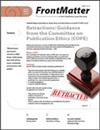中亚拟蝎子属(拟蝎子目:拟蝎子科)及尼泊尔一新种记述
IF 0.9
3区 农林科学
Q3 ENTOMOLOGY
引用次数: 3
摘要
摘要centrrochthonius Beier, 1931是世界上最罕见和最不了解的假蝎子属之一。目前已知的标本屈指可数,全部来自中国、吉尔吉斯斯坦和尼泊尔的高海拔栖息地。标本的难以获取导致了主要的分类学困难,例如较差的一般诊断,但也缺乏对这种嗜冷动物的进化模式的理解。本文首次对centrrochthonius进行了诊断,包括4个全新世种:1个来自吉尔吉斯斯坦,2个来自中国,C. anatonus sp. 11 .来自尼泊尔。来自中欧比特菲尔德琥珀(渐新世-中新世)的第五种化石表明,该属自新近纪以来发生了显著的范围退缩和大陆灭绝,这使我们提出了该动物群的气候遗留物假说。在生物地理上,该属为新生代全北极无脊椎生物群的重大范围转移和灭绝事件提供了进一步的证据。在整个东亚和美国西部暖温带森林的地下栖息地都发现了中龙的近亲,这突出了至少自古近纪以来古代动物群中气候循环引起的范围缩小的程度。来自日本洞穴的Allochthonius (Urochthonius) Morikawa亚属(1954)在很大程度上被定义为存在像眼睛缺失这样的trogloorphic特征,在这里被认为不足以与其他Allochthonius物种分开作为一个分支。因此,Allochthonius (Urochthonius)被视为Allochthonius (syn11 .)的低级同义词。本文章由计算机程序翻译,如有差异,请以英文原文为准。
The pseudoscorpion genus Centrochthonius (Pseudoscorpiones: Pseudotyrannochthoniidae) from central Asia and description of a new species from Nepal
Abstract. The pseudotyrannochthoniid genus Centrochthonius Beier, 1931 is one of the rarest and most poorly understood pseudoscorpion genera in the world. Only a handful of specimens are presently known, all from high-altitude habitats in China, Kyrgyzstan and Nepal. The inaccessibility of specimens has resulted in major taxonomic difficulties such as a poor generic diagnosis, but also a lack of understanding of evolutionary patterns in this psychrophilic fauna. Herein we diagnose Centrochthonius for the first time since its original description and include four Holocene species: one from Kyrgyzstan, two from China, and C. anatonus sp. nov. from Nepal. A fifth fossil species from Bitterfeld amber (Oligocene-Miocene) in central Europe highlights significant range retraction and continental extinction in this genus since the Neogene, leading us to suggest a climatic relict hypothesis for this fauna. Biogeographically, the genus provides further evidence for significant range shifts and extinction events in the Holarctic invertebrate biota during the Cenozoic. Close relatives of Centrochthonius are found in subterranean habitats throughout eastern Asia and warm temperate forests in the western U.S.A. which highlights the magnitude of range retraction caused by climatic cycling in an ancient fauna since at least the Paleogene. The subgenus Allochthonius (Urochthonius) Morikawa, 1954 from caves in Japan has been largely defined by the presence of troglomorphic features such as eye loss, which are here regarded as insufficient to retain as a separate clade from other species of Allochthonius. Therefore, Allochthonius (Urochthonius) is treated as a junior synonym of Allochthonius (syn. nov.).
求助全文
通过发布文献求助,成功后即可免费获取论文全文。
去求助
来源期刊

Journal of Arachnology
生物-昆虫学
CiteScore
2.20
自引率
10.00%
发文量
34
审稿时长
>12 weeks
期刊介绍:
The Journal of Arachnology publishes scientific articles reporting novel and significant observations and data regarding any aspect of the biology of arachnid groups. Articles must be scientifically rigorous and report substantially new information.
 求助内容:
求助内容: 应助结果提醒方式:
应助结果提醒方式:


